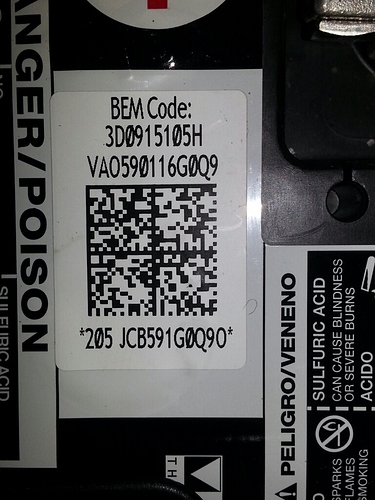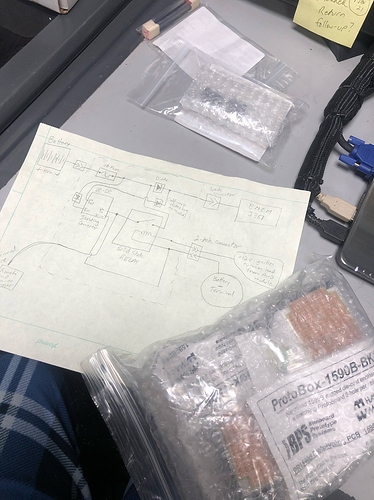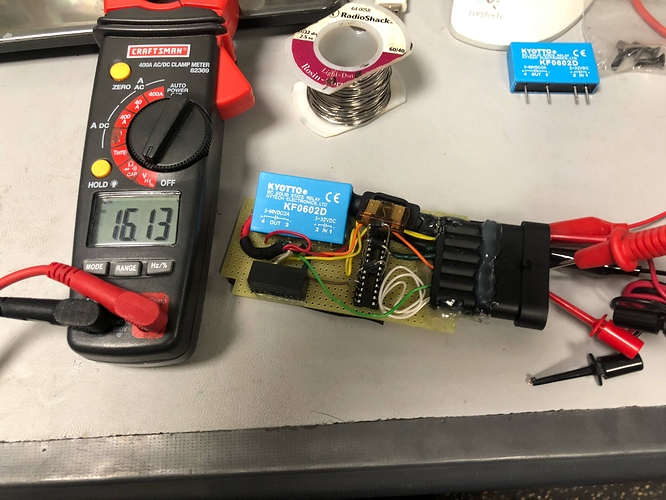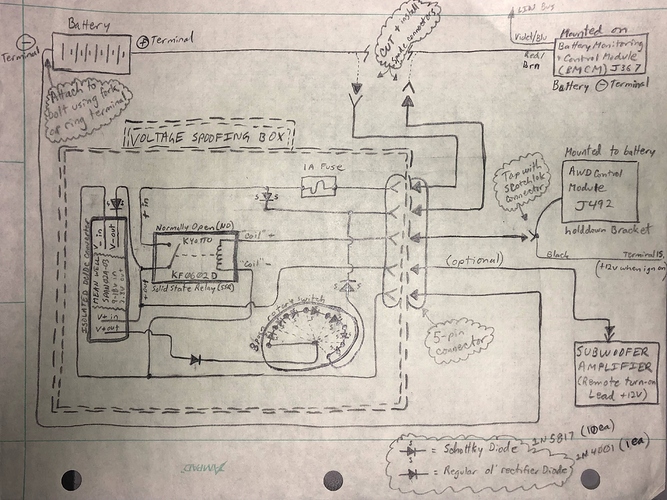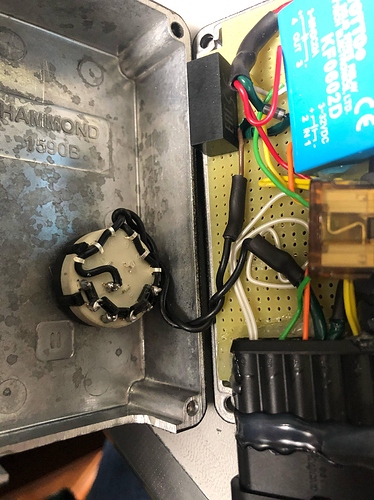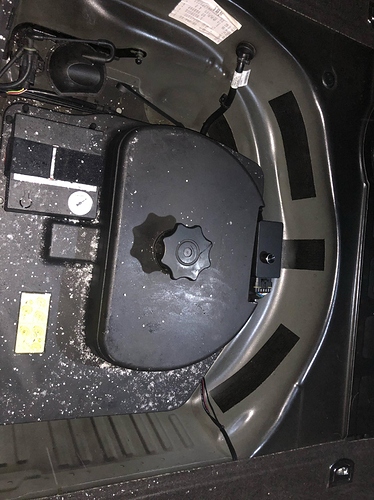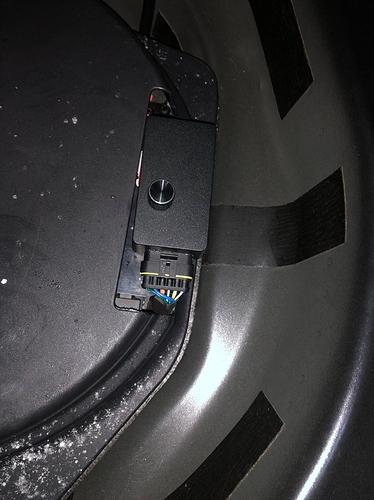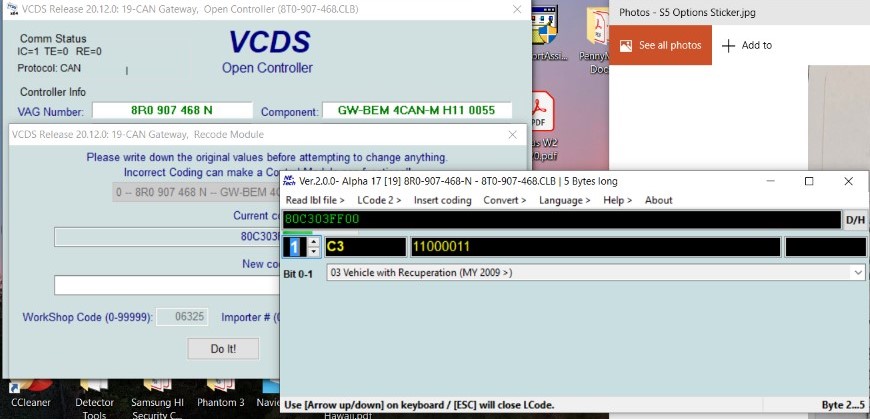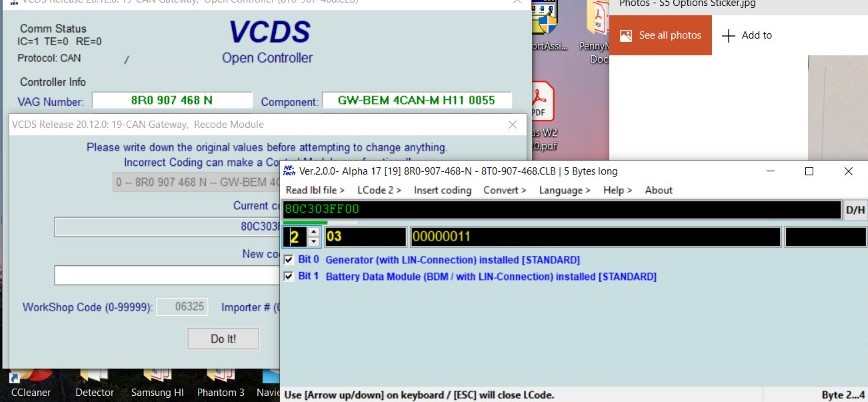Latest updates-
Simply disconnecting the BMCM has been effective. Voltage (according to the battery tracker) recharges to 14v shortly after startup, and no features are disabled (i.e. seat heaters, high beams, rear defrosters, etc.). I’ve seen no voltage spikes or adverse effects on any other vehicle systems, though I know this is throwing a “soft code” that’ll show up on a VCDS auto-scan. Also, since this is only a viable solution for the Audi cars that use this particular method of energy management (many other models have a more complex external regulator or an integrated electrical systems control module… neither of which should simply be unplugged!), I will continue to puruse the “spoofing” route.
Here are a couple photos (and the schematic) of the prototype I’ve created to inject a little extra voltage into the BMCM’s sensing lead without throwing off any other vehicle systems. It’s simpler than it looks… cut the wire going from the battery to the BMCM, and that’s two of your connections. One more goes to the battery terminal itself to provide ground, another gets “switched” power when the ignition is on via a tap off of the wiring harness to the AWD module that also happens to sit in the trunk (some models have a whole “ignition hot” fuse block in the trunk but not our 5 series, I believe… or at least not my RS5. I have a fifth wire that’s also turning on my subwoofer amplifier, but that’s optional.
HOW IT WORKS: When the ignition is off, the module is “passive”. Voltage flows from the battery positive terminal (through a low-amp fuse and a small Schottky diode to keep the module isolated in case I messed something up) and on to the BMCM as it usually does, reflecting accurate battery voltage within a tenth of a volt (small drop due to the diode). When the ignition is on, the +12V tapped from the AWD module’s harness engages a solid-state relay (I picked a SSR to ensure only minimal drain on the stock system so it won’t even know it’s there). That relay then provides a 12v signal to an ISOLATED (it MUST be isolated) DC-DC converter that steps the voltage down to 3.3v. It also sends a 12v signal to turn on my amp ;). Then, I run that 3.3v IN SERIES WITH the battery wire going to the BMCM so that the voltage generated gets ADDED to the battery’s voltage. Using a few diodes in line with that wire (each diode has a voltage drop associated with it, but has low impedance so once again the car shouldn’t know any better), I can drop the added voltage to whatever level we desire. Probably going to be shooting to add around 0.7 volts, as I’ve seen this alternator put out up to 15v. Ultimately, I’ll be looking for whatever amount of diodes causes the car to charge the battery to about 14.1 or 14.2 V WITHOUT any associated voltage spikes.
In the photo below, I have three “regular” diodes and one Schottky diode in series. My bench power supply puts out about 13.9V and I’m seeing about 16.1V on my multimeter… a boost of around 2.2v. Before I install it in the car, I’ll probably end up adding four more “regular” diodes (the IC socket has its pins soldered together in pairs, allowing me to use it like a breadboard to quickly test different combinations without soldering).


Update - the IC socket sucks for holding diodes. I honed in on the approximate number of regular and Schottky variants I needed, and ended up soldering them all into a multi-position rotary switch, so I can adjust the outputted “boost” voltage on the fly. Here is a schematic that is more reflective of my final prototype, with some further improvements to ensure voltage remains isolated and the car is protected against backfed current while increasing the “fine-tunability” of the boost voltage. Also, some more photos of the finished product.






